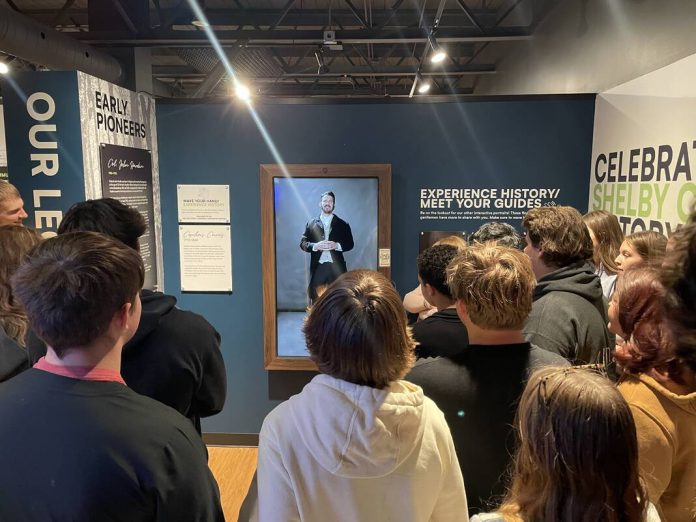
Courtesy photo
SIDNEY – In a unique educational collaboration, students from Sidney High School’s Intro to Human Geography course recently experienced an enriching journey through their community’s history and urban development followed by a high-level overview of recent and future development of their community. Partnering with the Shelby County Historical Society and the city of Sidney government, this field trip exposed students to practical insights into the dynamics of human geography within their own backyard.
Led by Brett Bickel, Intro to Human Geography is a new College Credit Plus course at Sidney High Schools that covers physical and political geography but also explores people, culture, migration, religion, trade, development, and all aspects of human development and connection.
In March, the class, made of up 24 students in grades 9-12, is learning about urban development. Recognizing the value of experiential learning, Bickel arranged for students to visit the Wallace Family Learning and Innovation Center to learn more about the industrial development of Sidney and Shelby County from local historians from the Shelby County Historical Society.
SCHS Director Tilda Phlipot and volunteer docent Julie Gilardi led the class through their impressive museum, sharing stories that illuminated the evolution of Sidney, starting with the initial settling of our region and the development of the city’s court square district. They heard about transportation developments from the canal system to rail transportation as they related to the expansion of opportunity for the Sidney community. Students learned the importance of these two to the eventual industrial boom that positions our community to be so unique.
The Wallace Family Learning and Innovation Center highlights the visionaries who defined the future of our community.
Moving from the past to the future, the class walked the streets of Sidney’s downtown to visit City Hall to learn about urban development as it relates to the Sidney community from City Manager Andrew Bowsher and members of the city’s community development team. Bowsher shared about Sidney’s unique positioning of having the most industrial jobs per capita in the state, He also shared about the city’s role in addressing housing disparities, especially as the local industry expands. Project by project, Bowsher shared about the City’s future planning and development as they relate to what’s next for Sidney’s revitalization.
One particularly impactful field trip experience was a hands-on charrette Bowsher organized where students looked at a particular two-block area of Sidney located near downtown that currently has a lot of extra green space. The students collaborated in small groups to brainstorm ideas to fill these spaces. From fountains and parks to arcades and bookshops, exploring their ideas fostered a sense of ownership and pride in their community.
“Our trip was incredibly rewarding thanks to the help of the Shelby County Historical Society, the Wallace Family Innovations and Learning Center, and the city of Sidney,” said Bickel. “The students asked insightful questions! It’s great to see them engage in this multifaceted exploration of their community’s past and present, and then involve themselves in its future”
As the Human Geography course continues to evolve, the hope is to provide freshman students with the opportunity to explore the intersection of history and geography while developing a common vocabulary and historical background knowledge to succeed in future College Credit Plus social studies courses at SHS. Human Geography is one of 25 College Credit Plus courses offered at Sidney High School in partnership with Edison State Community College.
“I want to personally thank the students, faculty, and Sidney City Schools for visiting City Hall and learning more about what’s happening in their community,” said Bowsher. “It was great to hear questions and see the students impassioned with economic development, parks, and housing. This new pilot class instructed by Mr. Bickel is going to pay dividends long into Sidney’s future, but also for each student individually. We are looking forward to future collaborations between the city and school district and how we can partner within this class and others like it.”


